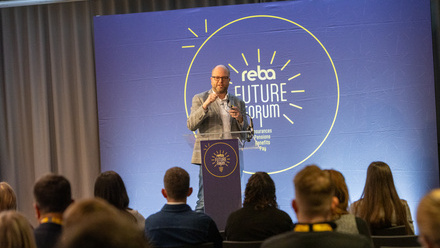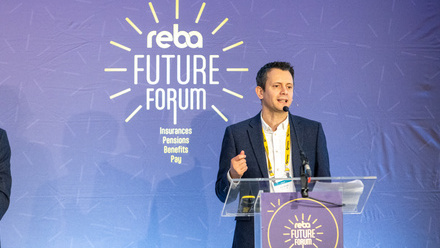The role of employee benefits in fostering diversity and inclusion

The prioritisation of D&I is gaining traction across multiple industries and divisions, with 60% of UK employers now planning to incorporate inclusion and diversity into their benefits design, according to our Benefit Trend Survey (2019).
Employers are tending towards a more holistic view on broad issues across reward, working practices, (flexible and remote working), policies (family leave, sabbaticals), and benefits (healthcare, life, income protection and retirement). And fulfilling D&I objectives is becoming a fundamental element of this approach.
Today, more than ever, business leaders recognise the benefits of having a truly diverse workforce and appreciate the innovation, ideas and perspectives that can be gained from having alternative life experience and backgrounds.
Benefits remain a critical area where employers can demonstrate their commitment to D&I and to the creation of an inclusive, progressive and safe environment in which all employees can thrive.
In recent years, much of the focus in the UK stemmed from gender pay reporting requirements, as well as opportunities for BAME (Black, and Minority Ethnic) and neuro-diverse employees, such as those living with autism, Asperger's syndrome, dyslexia, ADHD and dyscalculia.
Policies
Flexible working practices are recognised as supporting employees achieve a better balance between work and non-work commitments. Indeed, employees who frequently work from home are twice as likely to say their job allows them a healthy work/life balance than those who have no flexible arrangements in place (56% vs 25%), found our 2020 Global Benefit Attitudes Survey.
There is also a correlation between flexible working options and employee engagement, with half (50%) of frequent flexible workers reporting that they are highly engaged with their job, compared to just one quarter (25%) of non-flexible workers.
Widespread flexible and remote working, prompted by the COVID-19 pandemic, acted as a forced pilot for companies, testing many of the reservations that traditional employers had on the feasibility of such policies.
Over the past 12 months, parental leave has come under the spotlight, with a significant increase in the number of employers seeking to benchmark their policies.
Employers are taking action to enhance the duration of leave, improve the provision for fathers and to adopt a wider, more inclusive policy to support parents “however they become parents”, in a nod to adoption, surrogacy and same-sex parents.
Evidently, shared parental leave legislation still requires development, but progressive employers are using it as a minimum standard, with the goal to exceed rather than simply meet legal obligations.
At present, Standard Life Aberdeen has one of the most progressive policies; 52 weeks leave, of which 40 will be fully paid, irrespective of gender, and flexibility over when leave is taken, up to two years from birth or placement (adoption).
The policy means that the primary caregiver does not have to share their entitlement or end their parental leave early.
An array of employers across the technology, professional services and finance sectors have made notable enhancements in their parental leave policies, which is reflected by the responses from the 1000+ participants of the WTW’s Benefits Data Source 2019.
Employee benefits
For too long, the UK’s benefits marketplace has failed to keep up with societal changes, evolving family constructs and changes in behaviour and expectations.
In fact, many of the developments in recent times have been driven by the Reward and HR community questioning how their benefits can better reflect the way employees live their lives in 2020 and beyond.
Employers can start assessing benefits against inclusion and diversity measurables by asking:
- How many of our employees will work beyond Age 65?
- Do our insurances continue to provide cover past this date? Many are still incorrectly limited to the previous default retirement age, whilst others potentially penalise older employees by providing a higher cost to employees over the age of 65.
- Are our Life Assurance or Spouses Pension Benefits reflective of the modern family? Spouses/Dependants Pensions provide an income (taxed at the beneficiary’s marginal rate) to spouses and their children for a number of years in the event of their death. But, if all employees were eligible to receive this, especially if they are unattached or have no children, the employer cost is likely to outweigh the benefit to much of the workforce.
- Are our medical benefits accessible and relevant to all? Using Telemedicine/Virtual GP services has seen broad adoption amongst employers which undoubtedly represents progress. Gender Dysphoria coverage, for employees going through the gender reassignment journey, has seen a significant rise amongst many of the largest employers (typically within self-funded healthcare trusts). Extending coverage to cover several chronic medical conditions, which have traditionally been excluded, has also been piloted amongst large, progressive employers with healthcare trusts.
The business case for D&I in employee benefits and policies
Besides the moral and societal imperative, there is a strong and well-developed business case to support the focus of inclusion and diversity in the workplace.
According to 2018 research by the Centre for Economics and Business Research, the UK’s most diverse workplaces (across gender, ethnicity and sexual orientation) are 12 percentage points more likely to financially outperform their industry average than the least diverse firms.
Further findings suggest that employers with the most developed diversity policy are 15 percentage points more likely to financially outperform those with less focus on diversity.
Ultimately, inclusion and diversity does not exist in a vacuum. If we are to close the gender pay gap and provide a more inclusive working culture, which enables individuals to bring their whole-selves to work, we must ensure that our working practices, rewards and benefits reflect and support this objective.
Fundamentally, these are the yardsticks that employees and prospective employees will increasingly look for in an employer – the impact of which will go far beyond the rhetoric and mission statements.
The author is James Spencer, director at Willis Towers Watson.
This article is provided by Willis Towers Watson.
Supplied by REBA Associate Member, WTW
WTW is a leading global advisory, broking and solutions company.







